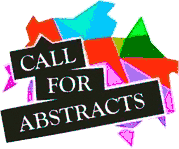
Rune Hylsberg Jacobsen
Aarhus University, Denmark
Title: Efficient use of Cloud Computing for Geospatial Data Processing in the Internet of Things
Biography
Biography: Rune Hylsberg Jacobsen
Abstract
Internet of Things (IoT) and cloud computing technology are advancing digitization and efficiency across application domains. Sensor technology provides insights into system performance and other observables. Sensor devices range from simple electronics to highly sophisticated multi-spectral cameras capable of measuring earth surface reflectance in different spectral bands. Such remote sensors can be carried by drones or satellites to produce streams of geospatial data. A satellite such as Sentinel-2, with revisit times of 5-10 days, delivers open data that surpass gigabytes volumes per week for a region as Denmark. Open satellite data is provided in downloadable bulks and calls for efficient processing with the aim of gaining new knowledge. In this talk, I present results from a feasibility study on the use of elastic cloud computing that efficiently provides data analytics based on bulks of satellite data from multi-spectral camera sensors. The performance of the processing cloud infrastructure is analyzed with the aim of determining a cost optimal elastic cloud computing infrastructure. The infrastructure is based on Open Geospatial Consortium (OGC) standards and OpenSensorHub is used to provide a dynamic sensor web application from the combination of geospatial maps and time series data. Furthermore, I present an efficient caching mechanism that minimizes the need for data downloads. The cloud infrastructure allows us to prepare knowledge gained from data and present this to stakeholders in a cost-efficient manner. Results from a case study in precision agriculture demonstrates several conceivable applications of calculated vegetation indices such as field classification and harvesting detection.

